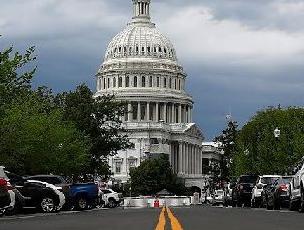英语访谈节目:随着疫情继续蔓延,美国人如何应对日渐缩水的失业救济
JUDY WOODRUFF: The economic crisis stemming from the COVID-19 pandemic has worn on for months now. Congress is still a long way from passing a new round of economic relief, and one of the limited actions that President Trump took a few weeks ago is still in the middle of being implemented. Here to explain where things stand is our own Lisa Desjardins. So, hello, Lisa. We know there are something like 27 million Americans who are receiving some form of unemployment benefits, and it was just a matter of weeks ago that President Trump promised an additional $300 a week. But the states had to sign on. What do we know about where all that stands?

LISA DESJARDINS: Judy, nearly every state has to apply to get that money. But it's interesting. They have to make a choice to do it. States can either ask for $300 per person, and because of some creative guidance by the Trump administration, the state doesn't have to contribute anything, or the state could choose to add another $100 on its own, for $400 a week for each unemployed person. But the trick is, Judy, each state has a different system. Many are outdated, so it is taking weeks, in some cases maybe months, for the states to process and get this going. So let's explain what is happening through a series of maps. First of all, let's look at this. Look at the red state here, South Dakota. That is the only state that has declined to participate, that state saying that its economy is good, it doesn't need that extra money. Now, the next series, let's look at these five states. These are the five states that have decided to give $400 a week for their unemployed. That is their plan. But, as you can see here in yellow, nearly every other state is opting for that $300, because most states say they just don't have the budget to contribute themselves. Now, Judy, here's the big question, though. How many workers are seeing this money right now? Those are these states. Just five states so far have been able to get out this extra, in most cases, $300 per person. And, Judy, this money is coming from a disaster fund that is also meant for hurricanes. That money is running out quickly. We're not sure how long it will last. There is a race to get this money. And it seems that maybe only four or five weeks total will be available for any state.
JUDY WOODRUFF: And, Lisa, if you step back, what does this mean for people who are counting on this money? I know our team has reached out to number of -- a number of people who are unemployed.
LISA DESJARDINS: That's right. We spent a day -- the day today really talking to a lot of people. And, Judy, it was $600 additional that these unemployed workers were getting. But that ran out weeks ago. And Congress has sort of been stuck in negotiations since. So, for many of these families, that's $3,000 less that they have. And that means a lot of anxiety. I have heard of families cutting back, trying to pool resources, but they're just not sure how long they will be able to make it with those tactics. And, in fact, one of those people is Elizabeth Bartholomew from Grand Rapids, Michigan. She is an event planner who lost her job because of the coronavirus.
ELIZABETH BARTHOLOMEW, Michigan: Before this, my husband and I kind of shared mortgage and split up our bills and stuff. And now all of that is on him. And so I think he feels a lot of pressure because of that. And my -- whatever little I make is just -- I'm -- I'm buying groceries for my kids
LISA DESJARDINS: That theme of family and trying to help people who depend on you was apparent. Another quote, this one from a woman named Kim in Mesa, Arizona. She was a church coordinator who -- also laid off because of the coronavirus. She told us: "It's pretty much between the choices of paying car insurance at this point or buying food or keeping the Internet on for my children who are paying to go to college online." So, Judy, a lot of very difficult choices right now. People telling us they're getting creative, but they're not sure how long this can last. And anxiety is rising very quickly.
JUDY WOODRUFF: And, meanwhile, Lisa, everybody is looking to the Congress to see what they are up to, where everything stands. What do you know?
LISA DESJARDINS: That's the frustrating part. All of these people agree they expected Congress to come through with something by now. But Congress is still negotiating. Senate Republicans, I'm told, feel that they are close to having their own plan, a small plan dealing with unemployment and small businesses, largely. But it remains to be seen, Judy. And one issue is that the House itself is only supposed to be in session for three weeks in September. So, everyone agrees, experts, unemployed, everyone, that September is the window to get this done. And if Congress isn't able to come up with more relief, then we will have a more serious economic problem very soon.
JUDY WOODRUFF: A lot of people waiting to see what happens. Lisa Desjardins, following it all for us, thank you.
LISA DESJARDINS: You're welcome.
- 上一篇

- 下一篇



 手机网站
手机网站